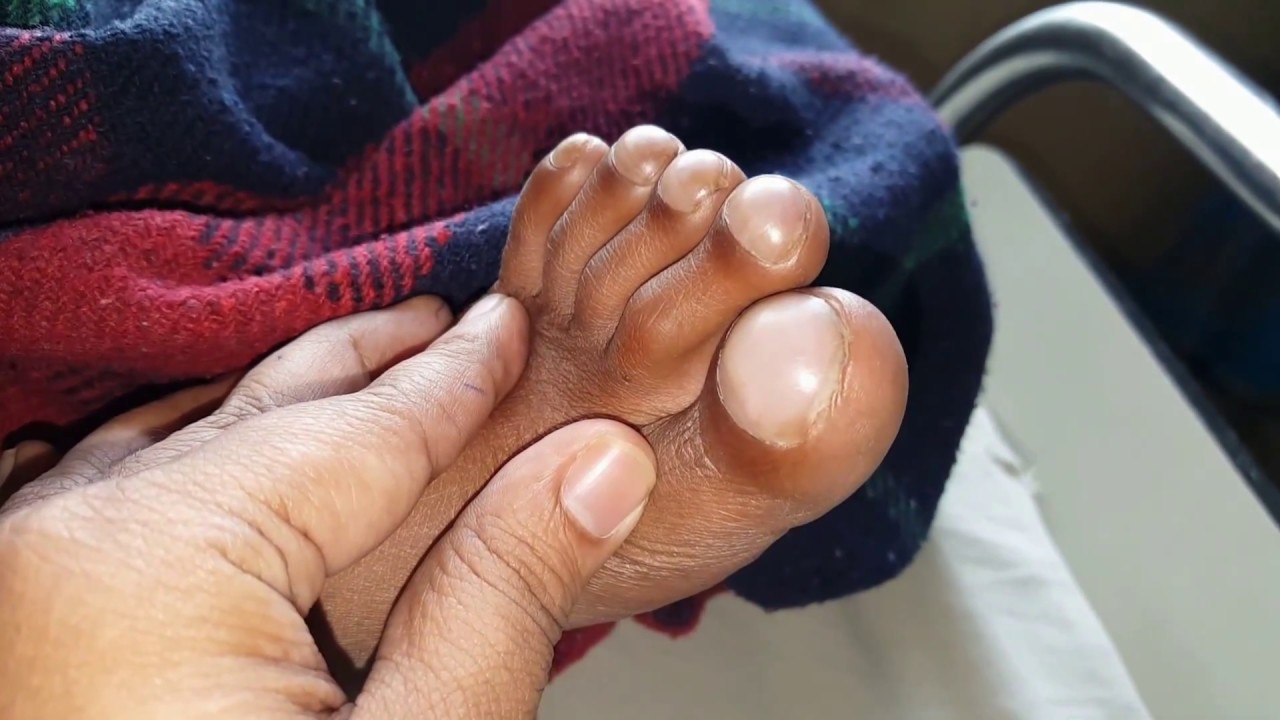Serious Problems That Sore Feet Can Indicate
Discolored Toes

Discolored toes can happen for many different reasons: from bruises and injury on the toes to bruising of the bone, to serious conditions such as Raynaud’s disease. Raynaud’s disease is one of the common reasons a patient may experience discolored toes, especially if their toes appear abnormally white, then bluish, and then redden again before turning back to their natural tone. This sudden fluctuation in color is caused by the sudden narrowing of the arteries called vasospasms, which are often triggered by stress or temperature changes. Raynaud’s disease is also linked to other disorders such as rheumatoid arthritis, Sjogren’s disease, and thyroid conditions.
Next, reveal how clubbed toes are formed and what health concerns are associated with them.
Clubbed Toes

Clubbed toes, and often the fingers too, is when the shape of the extremity changes, as the nails are significantly rounded on top and curve downward. Numerous diseases can cause clubbing of the toes, including lung disease and heart disease, due to the reduced amount of oxygen in the blood. Lung conditions include chronic lung infections that occur in patients with bronchiectasis, cystic fibrosis, or lung abscess. Liver and digestive conditions, along with specific infections, can also cause clubbed toes. In some cases, clubbing can be genetically inherited and run in families, meaning there are no underlying causes or diseases associated with it, but rather just a gene mutation.
Uncover what can cause itchy feet to develop now.
